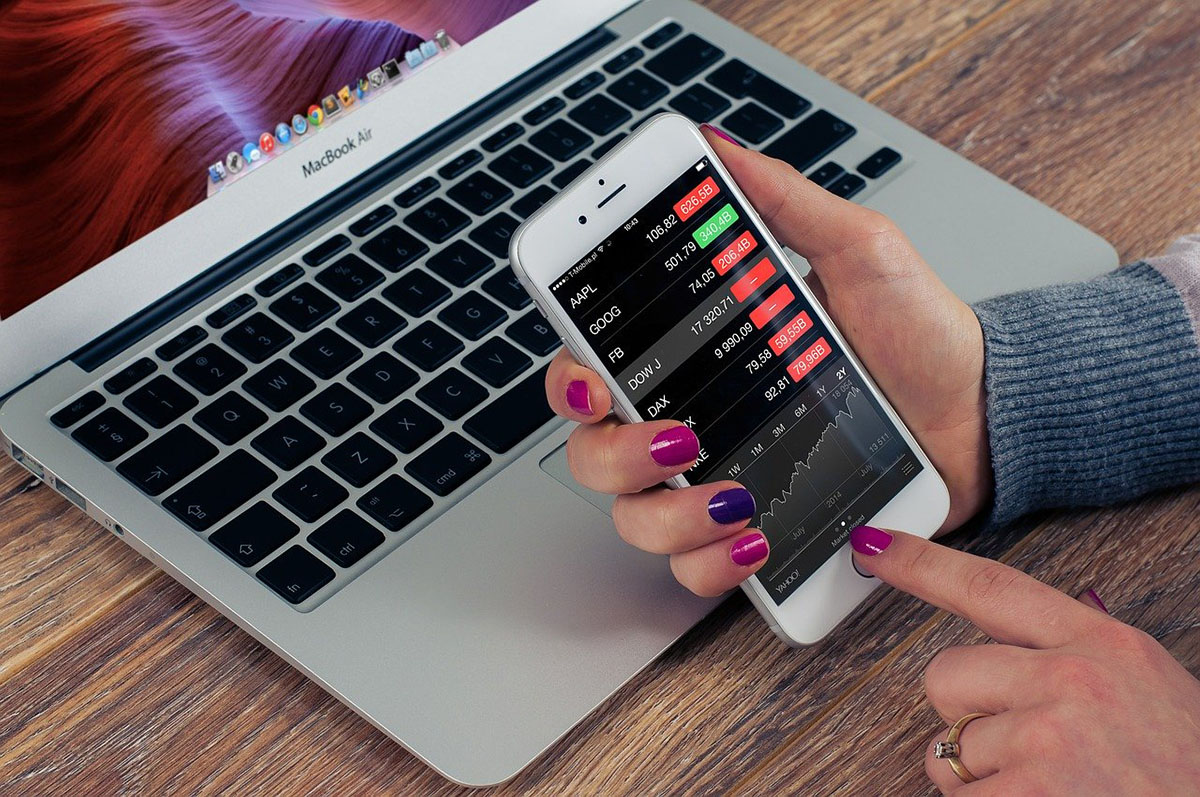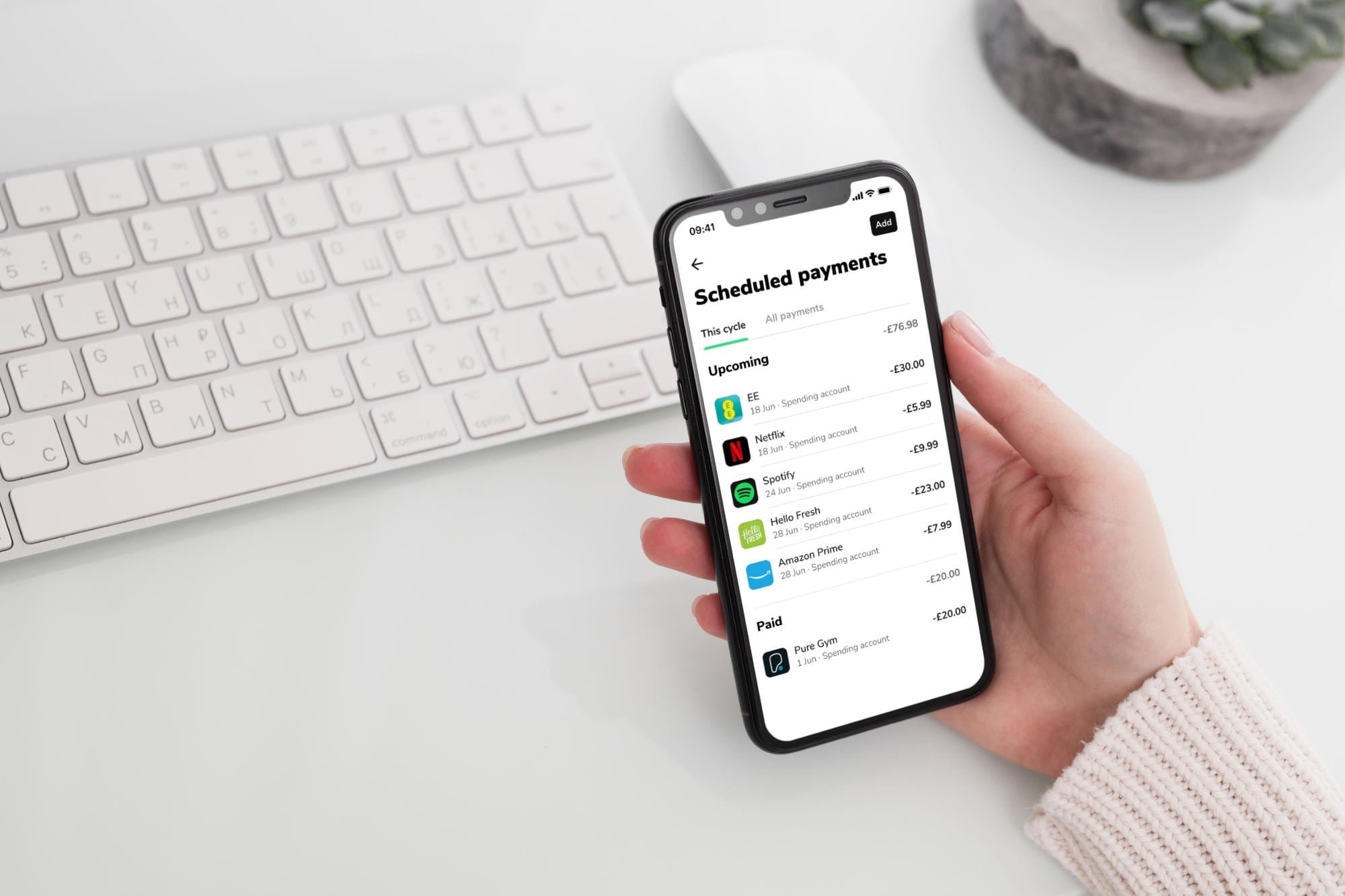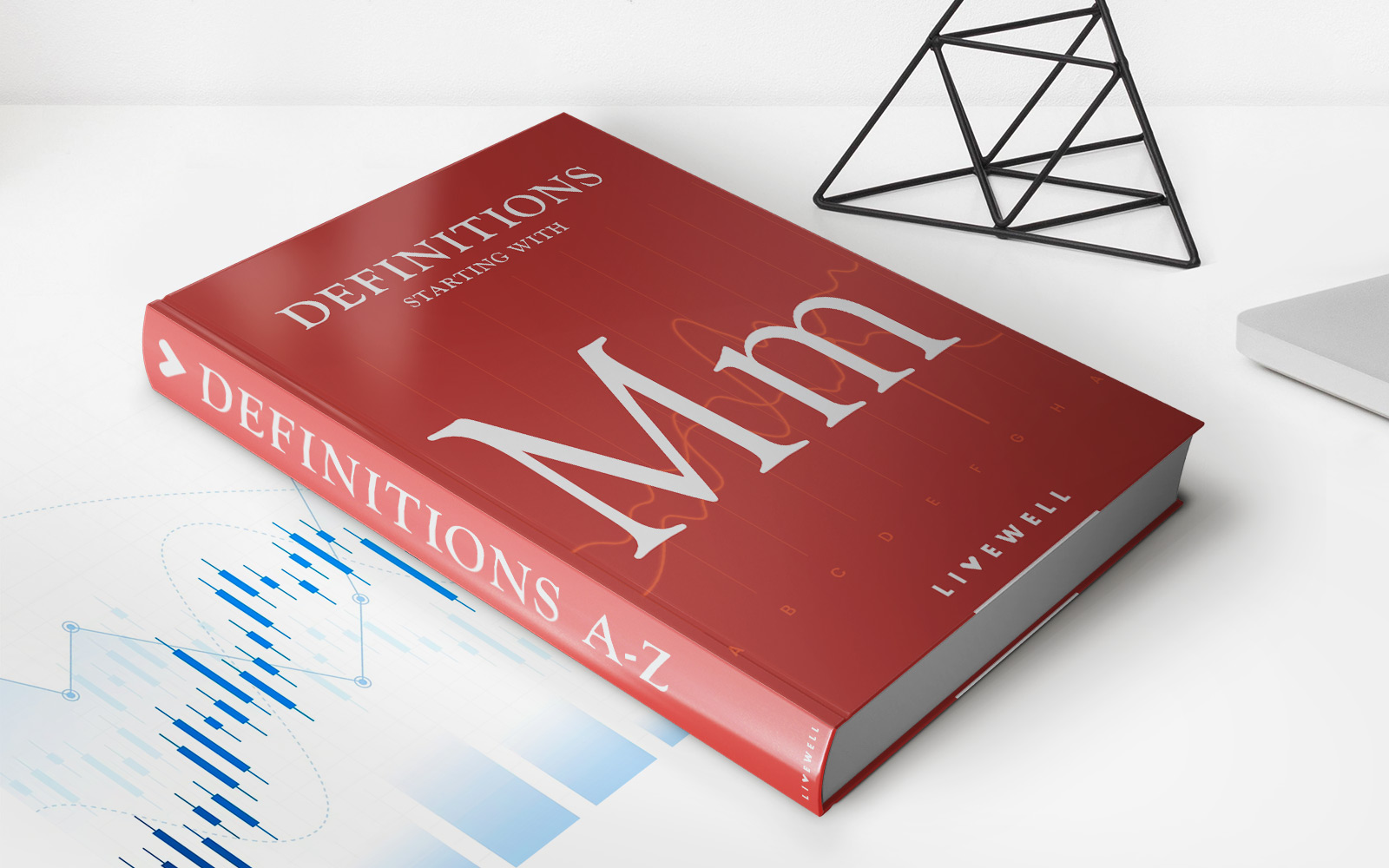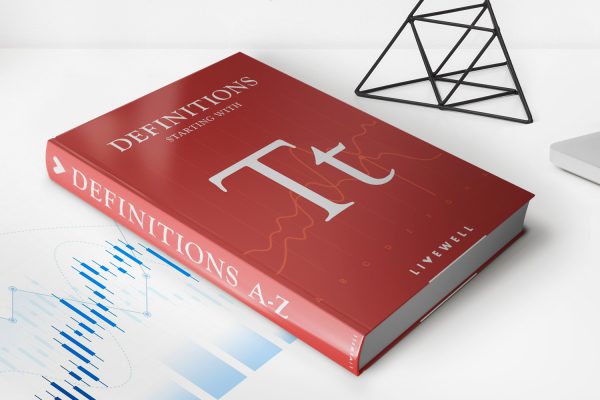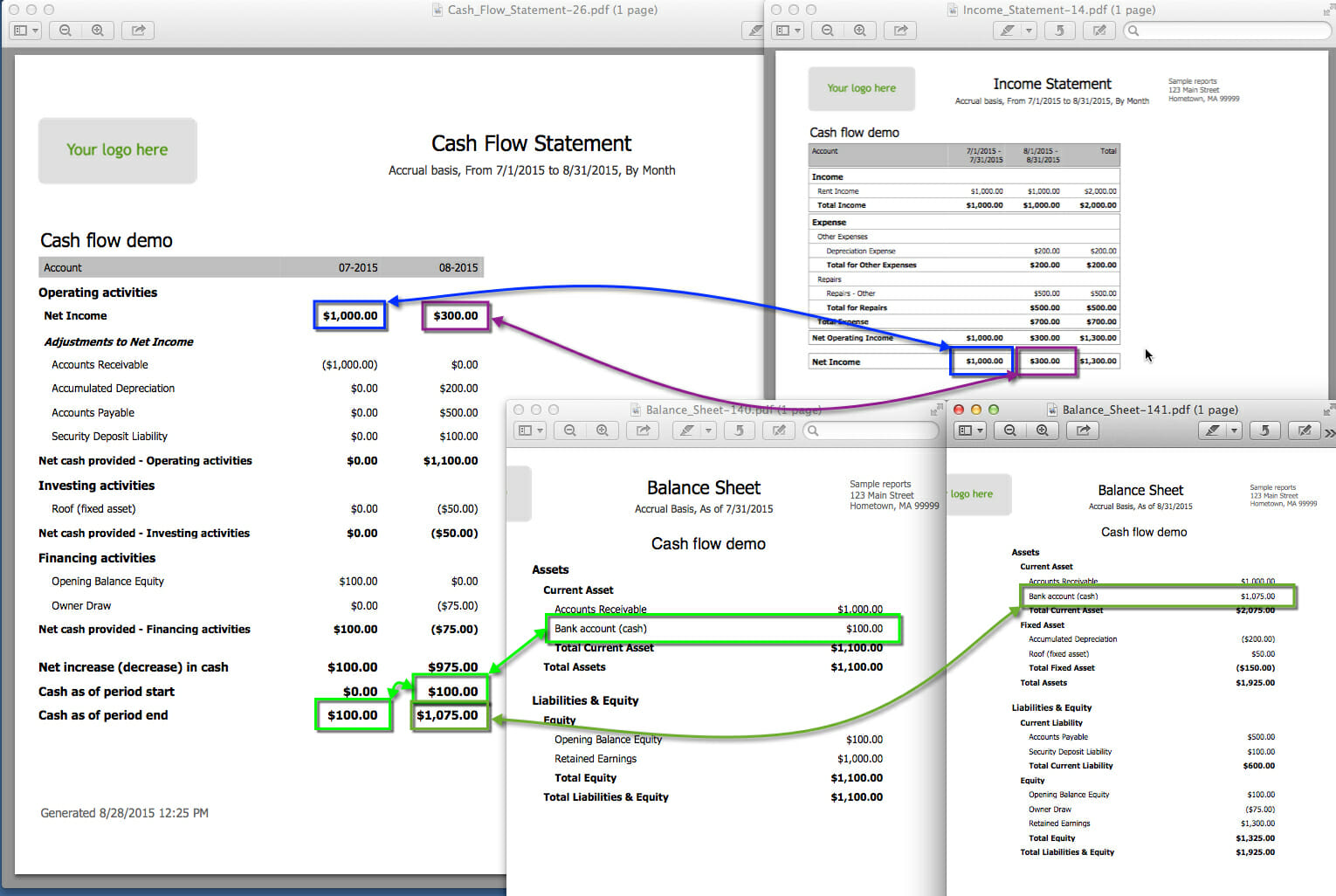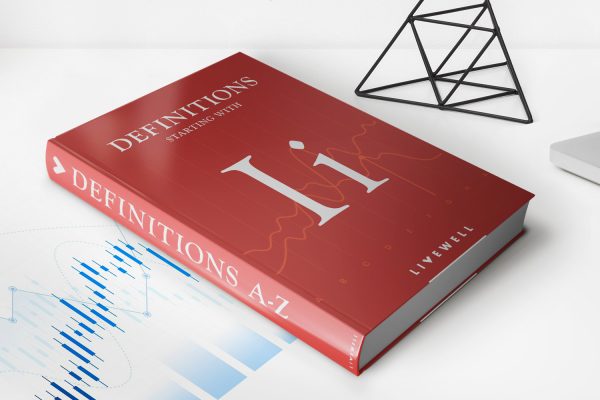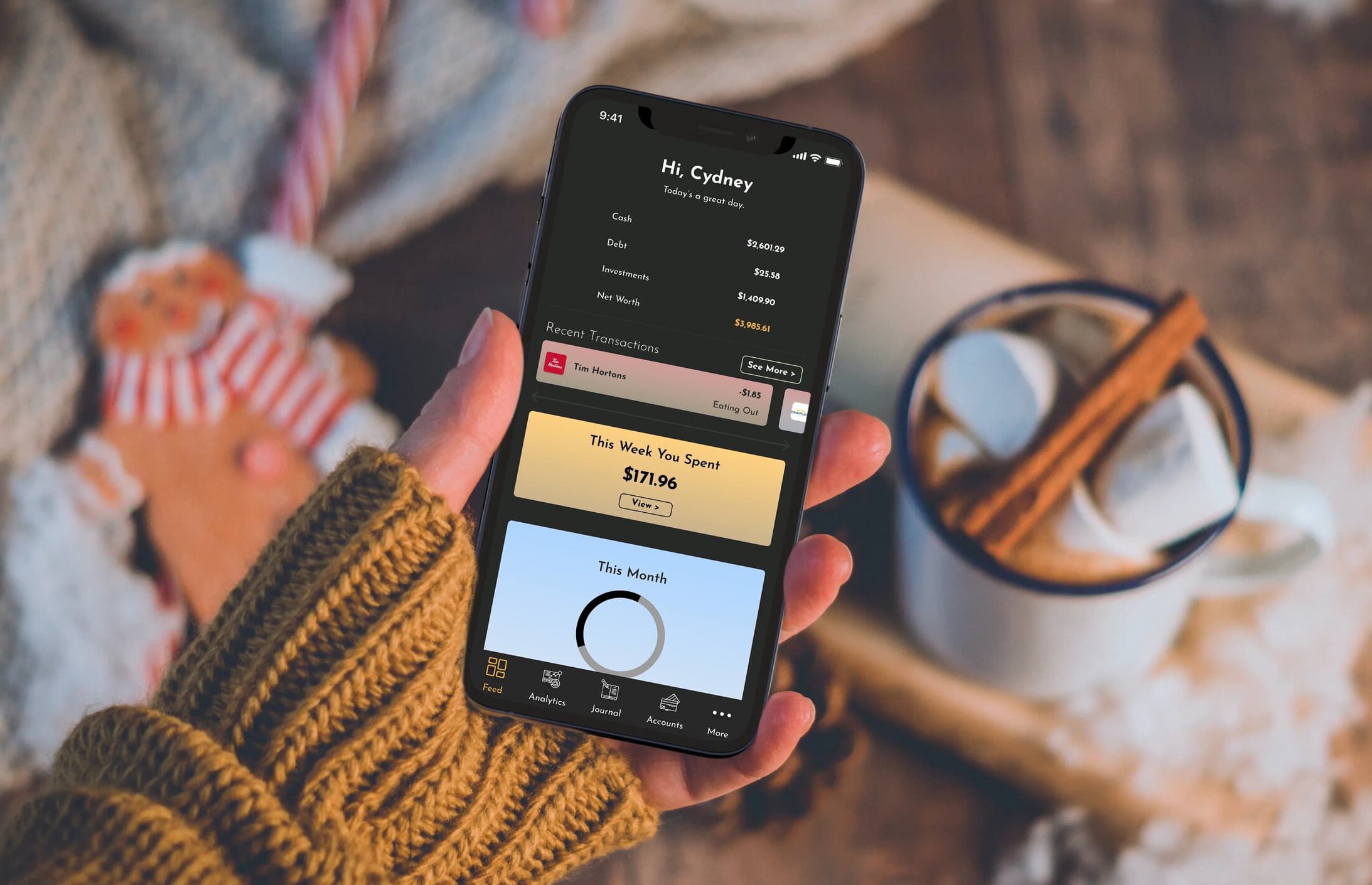

Finance
How To Create A Money Management App
Published: February 28, 2024
Learn how to develop a powerful finance app with our comprehensive guide on money management app creation. Start building your app today!
(Many of the links in this article redirect to a specific reviewed product. Your purchase of these products through affiliate links helps to generate commission for LiveWell, at no extra cost. Learn more)
Table of Contents
Introduction
Creating a money management app is a powerful endeavor that can significantly impact individuals' financial well-being. In today's digital age, where smartphones have become an integral part of daily life, a well-designed money management app can empower users to take control of their finances, make informed decisions, and work towards achieving their financial goals. This article will guide you through the essential steps of creating a money management app that not only meets users' needs but also provides a seamless and engaging experience.
As the demand for personal finance management tools continues to rise, developing an intuitive and feature-rich money management app presents a valuable opportunity for both users and developers. By understanding the intricacies of financial management and leveraging technology to simplify the process, developers can make a meaningful impact on users' lives.
Throughout this guide, we will delve into the crucial aspects of creating a money management app, from understanding the user's needs and designing the user interface to implementing financial tracking features, integrating budgeting tools, and incorporating security measures. Additionally, we will explore the significance of adding goal setting and tracking features to help users stay motivated and focused on their financial objectives.
By following this comprehensive roadmap, you will gain insights into the fundamental components of a successful money management app and learn how to effectively test and iterate the app to ensure a seamless user experience. Let's embark on this journey to create a money management app that empowers users to take control of their finances and achieve financial stability.
Understanding the User’s Needs
Before embarking on the development of a money management app, it is essential to gain a deep understanding of the users’ needs and pain points. Conducting thorough research and gathering insights into the financial challenges and goals that individuals encounter is paramount to creating a solution that resonates with the target audience.
First and foremost, it’s crucial to identify the specific demographic that the app aims to serve. Understanding the age group, income level, financial literacy, and technological proficiency of the target users will provide invaluable guidance in tailoring the app’s features and user interface to meet their requirements effectively.
Moreover, delving into the financial behaviors and habits of the target audience is instrumental in shaping the app’s functionalities. Are users primarily focused on budgeting and expense tracking, or do they seek comprehensive financial planning tools encompassing investment tracking, debt management, and retirement planning? By discerning these needs, developers can prioritize the integration of pertinent features that align with users’ financial objectives.
Furthermore, considering the user experience (UX) and user interface (UI) preferences is pivotal. Some users may prefer a minimalist and streamlined interface for quick expense logging, while others might value in-depth financial analysis and reporting capabilities. Understanding these nuances enables developers to craft a user-centric app that caters to diverse preferences and usage patterns.
Conducting surveys, interviews, and usability testing can provide direct insights into users’ pain points and aspirations regarding financial management. Additionally, analyzing existing money management apps and gathering feedback from potential users can offer valuable benchmarking data and highlight areas for improvement and innovation.
Ultimately, comprehending the users’ needs goes beyond surface-level preferences; it entails empathizing with their financial journeys, acknowledging their challenges, and envisioning how the money management app can serve as a supportive and empowering tool in their quest for financial stability and prosperity.
Designing the User Interface
The user interface (UI) of a money management app plays a pivotal role in shaping the overall user experience and facilitating intuitive interaction with the app’s features. When designing the UI, it is imperative to prioritize simplicity, visual clarity, and seamless navigation to ensure that users can effortlessly engage with the app while managing their finances effectively.
First and foremost, the app’s home screen should offer a concise yet comprehensive overview of the user’s financial landscape. This may include a summary of account balances, upcoming bills, and a snapshot of spending patterns. By presenting this information in a visually appealing and digestible format, users can quickly grasp their current financial status and stay informed about impending financial obligations.
Furthermore, the navigation within the app should be intuitive, with clearly labeled sections for different financial activities such as expense tracking, budgeting, goal setting, and financial reports. Implementing a bottom navigation bar or a straightforward menu structure enables users to seamlessly transition between various financial management tasks without encountering navigational complexities.
Visual elements such as color schemes, icons, and typography should be chosen thoughtfully to enhance the app’s aesthetics while maintaining readability and accessibility. Employing a visually pleasing yet unobtrusive color palette and utilizing easily recognizable icons can contribute to a visually engaging and user-friendly interface.
When incorporating input forms for expense tracking and budget setting, it is essential to streamline the data entry process. Employing input validation, auto-suggestions for recurring expenses, and the option to categorize transactions promptly can significantly enhance the user experience and expedite the financial management workflow.
Moreover, embracing responsive design principles to ensure compatibility across various devices, including smartphones and tablets, is paramount. The app’s UI should seamlessly adapt to different screen sizes and orientations, offering a consistent and optimized experience regardless of the device used.
Ultimately, the design of the user interface should prioritize user-centricity, emphasizing ease of use, visual appeal, and seamless navigation. By empathizing with users’ preferences and behaviors, developers can create a UI that fosters a positive and engaging financial management experience.
Implementing Financial Tracking Features
One of the core functionalities of a money management app is the ability to track and categorize financial transactions effectively. By implementing robust financial tracking features, users can gain comprehensive insights into their spending patterns, identify areas for potential savings, and maintain a clear overview of their financial inflows and outflows.
The foundation of financial tracking lies in seamless transaction logging. The app should allow users to input their expenses and income with ease, providing fields for amount, date, category, and optional notes. Additionally, incorporating the option to capture receipts or invoices through the app’s camera can streamline the process of documenting and organizing financial transactions.
Furthermore, intelligent categorization of transactions is instrumental in enabling users to discern their expenditure trends. Implementing predefined categories such as groceries, utilities, transportation, and entertainment, while also allowing users to create custom categories, ensures that transactions are accurately classified for insightful expense analysis.
Visualizing financial data through interactive charts and graphs enhances the tracking experience, offering users a visual representation of their spending habits and income sources. Presenting data in formats such as pie charts, bar graphs, and trend lines can elucidate patterns and facilitate informed decision-making regarding budget allocation and expense management.
Moreover, integrating real-time transaction synchronization with users’ bank accounts or financial institutions can automate the process of transaction tracking, minimizing manual data entry and ensuring that the app reflects the most up-to-date financial information.
Implementing features for setting spending limits and receiving notifications when approaching or exceeding predefined budgets empowers users to exercise financial discipline and stay within their financial targets. Additionally, providing insights into irregular or unexpected expenses through anomaly detection algorithms can aid users in proactively managing their finances.
Ultimately, the implementation of robust financial tracking features should prioritize accuracy, convenience, and actionable insights. By empowering users to effortlessly track their financial activities and comprehend their monetary behaviors, the money management app becomes an indispensable tool in fostering financial awareness and prudence.
Integrating Budgeting Tools
Effective budgeting lies at the heart of sound financial management, and integrating robust budgeting tools into the money management app empowers users to proactively plan and monitor their expenses, thereby fostering financial discipline and goal-oriented spending.
Central to the budgeting tools is the ability to create personalized budgets based on various expense categories, such as housing, transportation, groceries, entertainment, and savings. The app should offer a user-friendly interface for setting budget limits for each category, taking into account factors such as income, recurring expenses, and savings targets.
Real-time expense tracking against predefined budgets is instrumental in providing users with a clear understanding of their spending patterns. Visual indicators and notifications that alert users when approaching or exceeding budget limits serve as proactive measures to encourage prudent financial decisions and deter overspending.
Moreover, incorporating the ability to carry forward unspent funds from one budgeting period to the next fosters flexibility and aligns with real-life financial dynamics. This feature acknowledges that not all budgeted funds may be utilized within a specific timeframe and allows users to adapt their budgets accordingly, promoting a sustainable and adaptable approach to financial planning.
Forecasting future expenses and income based on historical data and recurring financial obligations can provide users with insightful projections, aiding in long-term financial planning and goal setting. By leveraging predictive analytics, the app can offer users a forward-looking perspective on their financial trajectory, enabling them to make informed decisions and anticipate potential financial challenges.
Furthermore, integrating goal-based budgeting features allows users to allocate funds towards specific financial objectives, such as saving for a vacation, purchasing a major asset, or building an emergency fund. The app should facilitate progress tracking towards these goals, offering visual representations of goal attainment and providing motivational cues to encourage consistent savings behavior.
Ultimately, the integration of comprehensive budgeting tools should prioritize flexibility, user empowerment, and actionable insights. By equipping users with the means to plan, monitor, and adapt their budgets effectively, the money management app becomes an invaluable ally in fostering prudent financial habits and realizing long-term financial aspirations.
Adding Goal Setting and Tracking Features
Empowering users to set and track financial goals is a pivotal aspect of a comprehensive money management app, as it instills a sense of purpose and direction in their financial endeavors. By integrating goal setting and tracking features, the app becomes a catalyst for motivating users to strive towards achieving significant milestones and realizing their long-term aspirations.
The app should facilitate the creation of diverse financial goals, ranging from short-term objectives such as building an emergency fund to long-term aspirations like saving for retirement or a major purchase. Each goal should allow users to define a target amount, a timeline for achievement, and incremental milestones to mark progress along the way.
Visual progress tracking through interactive charts, progress bars, or milestone notifications provides users with a tangible representation of their advancement towards their financial goals. Celebratory cues upon reaching milestones, such as confetti animations or encouraging messages, can imbue the goal-tracking experience with positivity and motivation.
Moreover, integrating savings automation features that allocate a portion of the user’s income towards specific goals reinforces consistent progress and reduces the cognitive burden of manual fund allocation. This automated savings mechanism aligns with the “set it and forget it” approach, ensuring that users make steady strides towards their financial objectives without the need for constant manual intervention.
Revisiting and adjusting goals based on changing financial circumstances and priorities is essential. The app should allow users to modify existing goals, reallocate funds between goals, and adapt timelines as needed, fostering flexibility and adaptability in the pursuit of financial aspirations.
Furthermore, incorporating educational resources and tips related to goal attainment, savings strategies, and investment options can enrich the user experience, equipping users with valuable insights and guidance to make informed decisions in their pursuit of financial goals.
Ultimately, the addition of goal setting and tracking features should prioritize empowerment, motivation, and adaptability. By providing users with the tools and encouragement to set, monitor, and achieve their financial aspirations, the money management app becomes a supportive companion in their journey towards financial fulfillment and security.
Incorporating Security Measures
Ensuring the security and confidentiality of users’ financial data is paramount in the development of a money management app. By incorporating robust security measures, developers can instill trust and confidence in users, fostering a secure environment for managing their sensitive financial information.
Implementing stringent data encryption protocols is fundamental to safeguarding users’ financial data from unauthorized access. Utilizing industry-standard encryption algorithms to protect data both in transit and at rest, the app can mitigate the risk of data breaches and unauthorized interception, ensuring that users’ financial information remains confidential and secure.
Enforcing multi-factor authentication (MFA) mechanisms adds an additional layer of security, requiring users to verify their identity through multiple credentials such as passwords, biometric authentication, or one-time passcodes. By integrating MFA, the app mitigates the risk of unauthorized access, particularly in the event of stolen or compromised credentials.
Furthermore, incorporating secure authentication methods such as biometric recognition (e.g., fingerprint or facial recognition) enhances the user experience while fortifying the app’s security posture. Biometric authentication not only streamlines the login process but also reduces the reliance on traditional password-based authentication, which is susceptible to phishing and credential-based attacks.
Regular security audits and vulnerability assessments are essential to identify and remediate potential security flaws within the app’s infrastructure and codebase. By proactively assessing the app’s security posture and addressing any identified vulnerabilities, developers can fortify the app against emerging threats and evolving security risks.
Compliance with data protection regulations, such as the General Data Protection Regulation (GDPR) and the California Consumer Privacy Act (CCPA), demonstrates the app’s commitment to upholding user privacy and data security. Adhering to these regulations entails transparent data handling practices, user consent mechanisms, and stringent data protection standards, bolstering users’ confidence in the app’s commitment to privacy and security.
Moreover, providing users with granular control over their privacy settings, data sharing preferences, and visibility of financial information enhances transparency and empowers users to manage the accessibility of their data within the app.
Ultimately, the incorporation of robust security measures should prioritize user trust, data confidentiality, and regulatory compliance. By prioritizing the protection of users’ financial data and privacy, the money management app cultivates a secure and trustworthy environment for users to manage their finances with confidence.
Testing and Iterating the App
Thorough testing and iterative refinement are crucial stages in the development of a money management app, ensuring that the app delivers a seamless, secure, and user-centric experience. By subjecting the app to rigorous testing and embracing iterative enhancements, developers can rectify issues, optimize features, and align the app with users’ evolving needs and preferences.
Conducting comprehensive usability testing with a diverse group of potential users enables developers to gather invaluable feedback regarding the app’s functionality, user interface, and overall user experience. User testing sessions provide insights into users’ interactions with the app, uncover usability challenges, and highlight areas for improvement, guiding iterative refinements that enhance the app’s usability and appeal.
Quality assurance testing, encompassing functional testing, performance testing, and security testing, is essential to validate the app’s reliability, responsiveness, and resilience to potential security threats. By rigorously testing the app’s features and infrastructure, developers can identify and rectify technical issues, optimize performance bottlenecks, and fortify the app’s security posture, ensuring a robust and dependable user experience.
Moreover, embracing an iterative development approach allows developers to incrementally enhance the app based on user feedback and emerging trends in personal finance management. Iterative iterations enable the integration of new features, refinement of existing functionalities, and adaptation to evolving user needs, culminating in a dynamic and responsive app that resonates with users’ expectations.
Engaging in beta testing programs, where a select group of users trial pre-release versions of the app, provides developers with real-world insights into user satisfaction, feature relevance, and performance under diverse usage scenarios. Beta testing feedback serves as a catalyst for iterative improvements, informing the refinement of the app’s features and functionality prior to its official release.
Post-release monitoring and user feedback analysis are instrumental in continuously refining the app’s performance, addressing emerging issues, and gauging user satisfaction. By actively soliciting and analyzing user feedback, developers can identify areas for enhancement, rectify user-reported issues, and prioritize feature updates that align with users’ expectations and preferences.
Ultimately, the process of testing and iterating the app should be ongoing, fostering a culture of continuous improvement and user-centric refinement. By iteratively enhancing the app based on real-world insights and user feedback, developers can ensure that the money management app remains relevant, reliable, and compelling in the dynamic landscape of personal finance management.
Conclusion
Developing a money management app that resonates with users and empowers them to take control of their finances is a multifaceted endeavor that demands a deep understanding of users’ needs, a commitment to user-centric design, and a relentless pursuit of security and reliability. By embarking on this journey to create a money management app, developers have the opportunity to make a meaningful impact on users’ financial well-being while contributing to the evolution of personal finance management in the digital age.
Understanding the diverse financial needs and behaviors of users serves as the foundation for crafting a compelling money management app. By empathizing with users’ financial journeys and aspirations, developers can tailor the app’s features and user interface to meet users’ needs effectively, fostering a sense of personalization and relevance.
The design of the app’s user interface plays a pivotal role in shaping the overall user experience, emphasizing simplicity, visual clarity, and seamless navigation to ensure that users can engage with the app intuitively while managing their finances effectively. By prioritizing user-centric design principles, developers can create an interface that resonates with users and facilitates a positive and engaging financial management experience.
Integrating robust financial tracking, budgeting, goal setting, and security features empowers users to proactively manage their finances, gain insights into their spending habits, and work towards achieving their financial aspirations with confidence. By prioritizing the security and confidentiality of users’ financial data, developers can cultivate a trustworthy environment that instills confidence in users and fosters a secure platform for managing their sensitive financial information.
Thorough testing and iterative refinement are essential to validate the app’s reliability, usability, and performance, ensuring that it aligns with users’ evolving needs and delivers a seamless and compelling experience. By embracing a culture of continuous improvement and responsiveness to user feedback, developers can refine the app iteratively, ensuring that it remains relevant, reliable, and compelling in the dynamic landscape of personal finance management.
In conclusion, creating a money management app that empowers users to take control of their finances is a transformative endeavor that demands a harmonious blend of user empathy, technical prowess, and unwavering commitment to user satisfaction and data security. By embarking on this journey with a user-centric mindset and a dedication to excellence, developers can craft a money management app that not only meets users’ needs but also enriches their financial lives, fostering a future where personal finance management is intuitive, empowering, and accessible to all.

